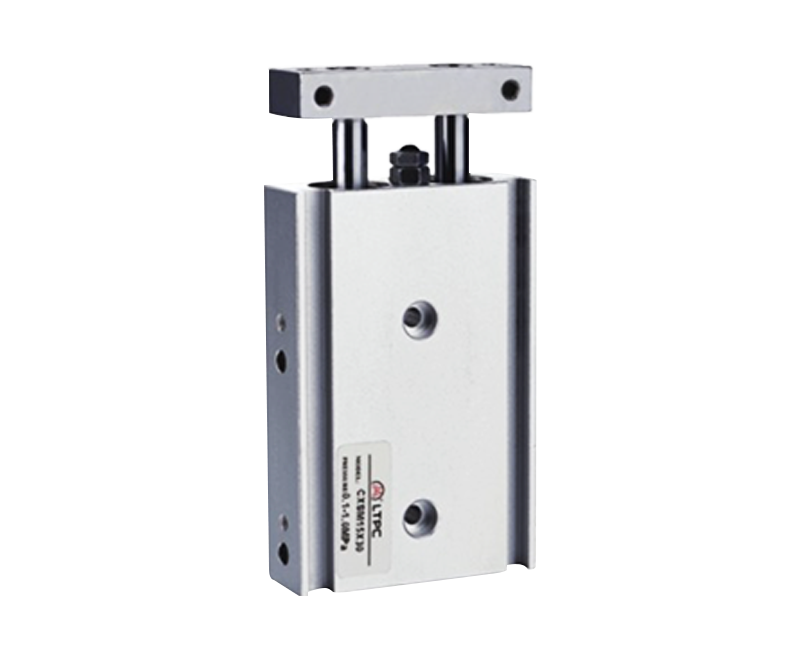①Single-acting cylinder: There is only one end of the piston rod, the gas is supplied from the side of the piston to generate air pressure, and the air pressure pushes the piston to generate thrust to extend, and returns by spring or its own weight.
②Double-acting cylinder: Alternately supply air from both sides of the piston to output force in one or two directions.
③Diaphragm type cylinder: The diaphragm is used instead of the piston, the force is output in only one direction, and the spring is used for reset. It has good sealing performance but short stroke.
④ Impact cylinder: This is a new type of element. It converts the pressure energy of the compressed gas into the kinetic energy of the high-speed (10-20 m/s) motion of the piston, so as to do work.
⑤Rodless cylinder: The general term for cylinders without piston rods. There are two types of magnetic cylinders and cable cylinders. The cylinder that does reciprocating swing is called a swing cylinder. The inner cavity is divided into two by the blades, and air is supplied to the two cavities alternately. In addition, there are rotary cylinders, gas-hydraulic damping cylinders and stepping cylinders.
⑥ Swing cylinder: The swing cylinder is a pneumatic actuator that uses compressed air to drive the output shaft to reciprocate and rotate within a certain angle range. It is used for turning, turning, sorting, clamping, opening and closing of valves, and robot arm movements of objects.
⑦ Rotary cylinder: Rotary cylinder—that is, a cylinder in which the intake and exhaust ducts and the air guide head are fixed, while the cylinder body can rotate relatively and act on the machine tool fixture and wire curling device, which guides the piston to perform linear reciprocating motion. Cylindrical metal parts.
⑧ Gas-liquid damping cylinder: The gas-liquid damping cylinder is also called the gas-liquid steady speed cylinder, which is suitable for occasions where the cylinder is required to move at a slow speed and evenly.

 English
English 中文简体
中文简体





















